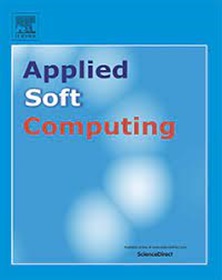Transformer spectral optimization: From gradient frequency analysis to adaptive spectral integration
IF 7.2
1区 计算机科学
Q1 COMPUTER SCIENCE, ARTIFICIAL INTELLIGENCE
引用次数: 0
Abstract
This paper explores a novel perspective on Transformer optimization by analyzing gradient characteristics in the frequency domain. First, we systematically quantify spectral differences between attention and MLP layer gradients, revealing that attention gradients consistently exhibit higher frequency content (23% higher mean frequency, 37% more prominent high-frequency components) compared to MLP gradients. Second, we demonstrate the potential of using spectral features for monitoring training dynamics, finding a strong correlation (r=-0.82) between early-stage spectral entropy and final validation loss. Third, building on these insights, we introduce Adaptive Spectral Integration (ASI), an optimization framework that selectively filters gradient spectra during training. Our experiments on GPT2-small with standard datasets (Penn Treebank and WikiText-2) show that ASI achieves notable inference speed improvements (6.3%-9.1%) and training time reductions (13.2%-18.8%) while maintaining comparable model quality. However, cross-architecture validation with BERT-style models reveals that ASI’s efficiency benefits are architecture-dependent, showing limited improvements on bidirectional models. These findings provide evidence that frequency domain analysis offers valuable insights for optimizing autoregressive Transformer models, while highlighting the need for architecture-aware spectral optimization strategies.
变压器频谱优化:从梯度频率分析到自适应频谱积分
本文通过对频域梯度特性的分析,探索了变压器优化的新视角。首先,我们系统地量化了注意和MLP层梯度之间的频谱差异,发现与MLP梯度相比,注意梯度始终具有更高的频率含量(平均频率高23%,突出高频成分多37%)。其次,我们展示了使用光谱特征监测训练动态的潜力,发现早期光谱熵与最终验证损失之间存在很强的相关性(r=-0.82)。第三,在这些见解的基础上,我们引入了自适应光谱集成(ASI),这是一种在训练过程中选择性过滤梯度光谱的优化框架。我们在GPT2-small上使用标准数据集(Penn Treebank和WikiText-2)进行的实验表明,在保持相当模型质量的同时,ASI实现了显著的推理速度提高(6.3%-9.1%)和训练时间减少(13.2%-18.8%)。然而,使用bert风格模型进行的跨架构验证表明,ASI的效率效益依赖于架构,在双向模型上显示出有限的改进。这些发现证明,频域分析为优化自回归变压器模型提供了有价值的见解,同时强调了对体系结构敏感的频谱优化策略的需求。
本文章由计算机程序翻译,如有差异,请以英文原文为准。
求助全文
约1分钟内获得全文
求助全文
来源期刊

Applied Soft Computing
工程技术-计算机:跨学科应用
CiteScore
15.80
自引率
6.90%
发文量
874
审稿时长
10.9 months
期刊介绍:
Applied Soft Computing is an international journal promoting an integrated view of soft computing to solve real life problems.The focus is to publish the highest quality research in application and convergence of the areas of Fuzzy Logic, Neural Networks, Evolutionary Computing, Rough Sets and other similar techniques to address real world complexities.
Applied Soft Computing is a rolling publication: articles are published as soon as the editor-in-chief has accepted them. Therefore, the web site will continuously be updated with new articles and the publication time will be short.
 求助内容:
求助内容: 应助结果提醒方式:
应助结果提醒方式:


